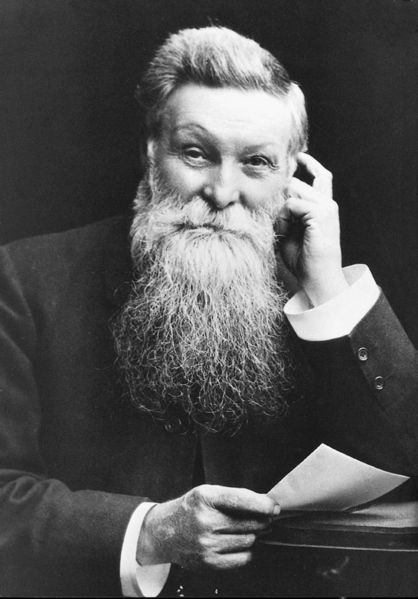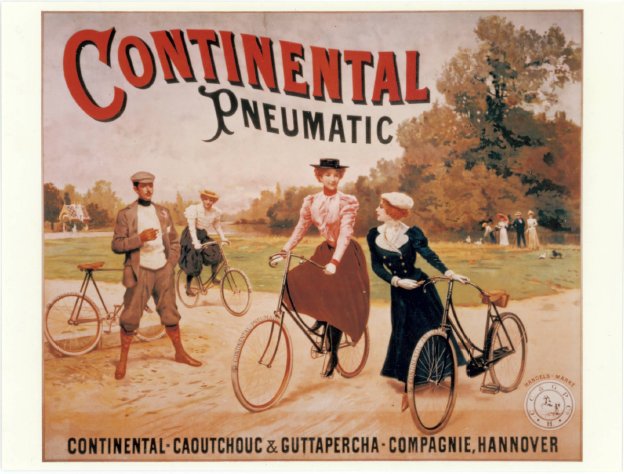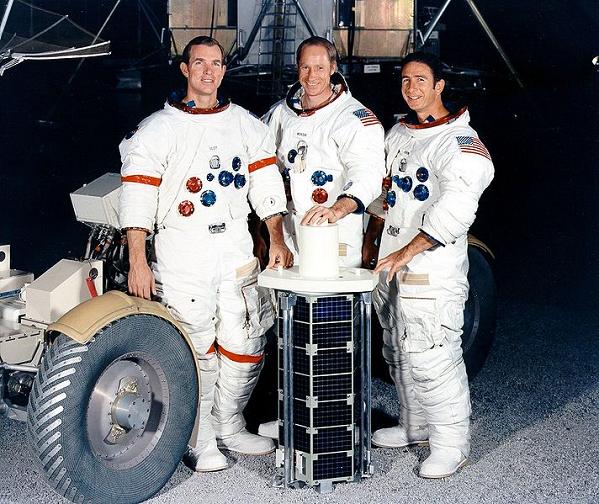‘A world without tyres’, Part 1 – 1845: William Thomson’s idea for the future
Official Press Release from Continental AG
A world without tyres would be inconceivable today. Without ‘packaged air’ it would be virtually impossible to corner smoothly in any vehicle and braking would depend on metal gripping on asphalt. Comfort, puncture-free performance, safe cornering at high speed – in the field of personal mobility, all these things that are so important to us today would probably not be available. And it all started with a Scottish inventor, William Thomson, who patented the first pneumatic tyre made from rubber in 1845. (ed: We did a quick check, if you want to read more about this guy, search for Robert William Thomson. William Thomson is also the name of an English physicist, an Archbishop of York, an ice hockey player, a singer, and an author-cum-politcian among others.)
Robert William Thomson (1822 – 1873)
Through his patent, Thomson anticipated the future. Those days virtually everything that moved on the roads had wheels with metal or wooden bands. Compared with the smooth asphalt strips we have now, the roads those days were poor, muddy and littered with nails that had come off wooden wheel bands and rims. Hardly ideal conditions for the first pneumatic tyres. Basically, though, these tyres were fortunate, because thanks to a lack of vehicles, they were hardly used. Their load capacities were inadequate for horse-drawn carriages and bicycle development was at that time still in its infancy. The discovery was soon forgotten and Thomson went on to dream up other, more promising ideas.
In history, many discoveries and inventions occur twice. And so it came about that in 1863 the Irish vet, John Dunlop, had the same idea as Thomson. (ed: Quite a few John Dunlops around too. The man of relevance to this story, however, is John Boyd Dunlop). The story goes that he was looking for more comfortable tyres for his daughter’s bicycle and that is how he invented the pneumatic tyre – for the second time. Only this time the tyre was more fortunate – it was not only invented by a cannier businessman than Thomson, by then bicycles were far more developed so there were good opportunities for using the tyre. (ed: Thomson tyres… probably won’t have quite the same nice ring to it as Dunlop.)

John Boyd Dunlop (1840 – 1921)
The pneumatic tyre signalled the start of individual mobility. Apart from rail vehicles, there is still today no larger form of transport, either on land or in the air, that is not fitted with tyres and offers relatively satisfactory speeds combined with steering precision.
A crucial development in the tyre industry was the invention of vulcanization process by Charles Goodyear. Vulcanized rubber, substantially more elastic than natural uncured rubber, is made using a heated mixture of rubber and sulphur. Forced into the appropriate mould, this could subsequently be filled with air and hey presto! the first pneumatic tyre was born. And this tyre could already do a great deal: the air contained in the rubber provided suspension for the wheel, its gripping characteristics ensured considerably better road holding and lower rolling resistance.
Driving became easier, braking safer, steering more precise. In the period following, the pneumatic tyre – as it then became known – soon outperformed the metal and solid rubber which had been used until then, although the bicycle riders of the day, the ‘velocipedists’, had to quickly become experts in the art of patching up their tyres. An excursion without a flat tyre was virtually unthinkable, so it took quite a lot of sporty determination to continue relying on the bicycle. Despite their susceptibility to punctures, the early pneumatic tyres were still considerably better than the iron or solid rubber bands they replaced.

Bicycles were the earliest consumers of pneumatic tyres.
The bicycle tyre thus became the archetypal tyre and it would be hard to imagine life today without it. All land-based vehicles that do not run on rails and almost all aircraft are immobile without the air that comes packed in rubber. Even space travel needs tyres – the Apollo 15 mission in 1971 showed that the lunar rover could only be moved dynamically using pneumatic tyres. And so the humble tyre was fundamental to our mobility. And its development continued unabated. As it matured, it provided the first cars with road grip. Its appearance also changed, as it gained the first tread patterns.

Apollo 15 rover used pneumatic tyres.
To find out more, read the next issue of ‘A world without tyres’
Pictures from: Continental AG & Wikimedia Commons.

























